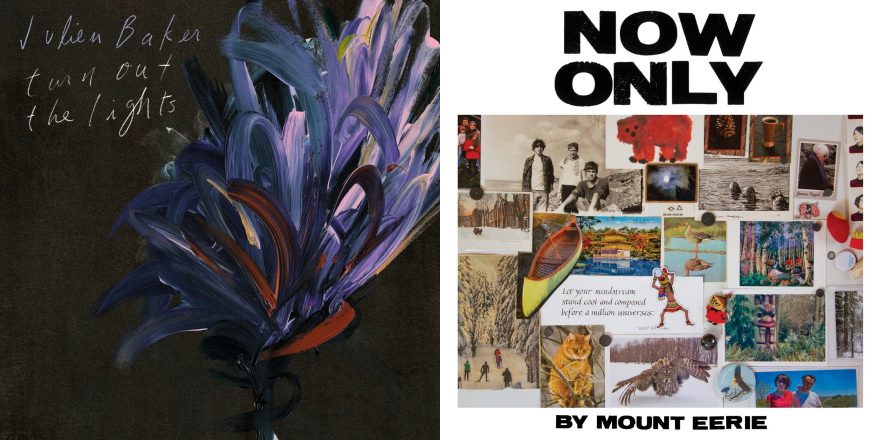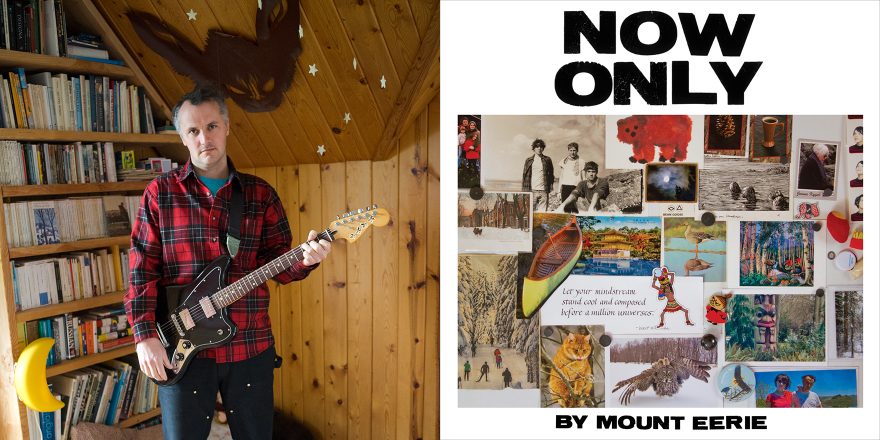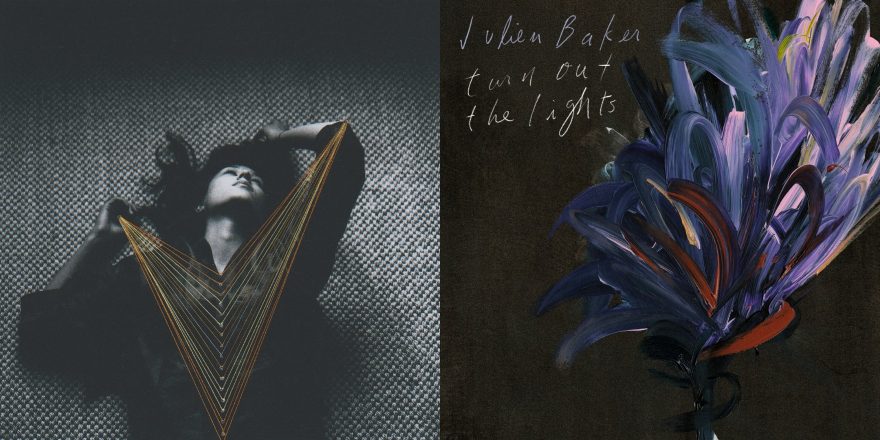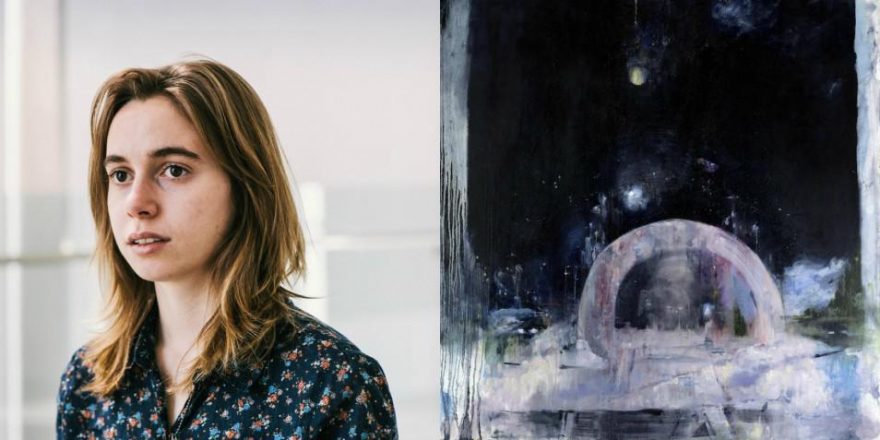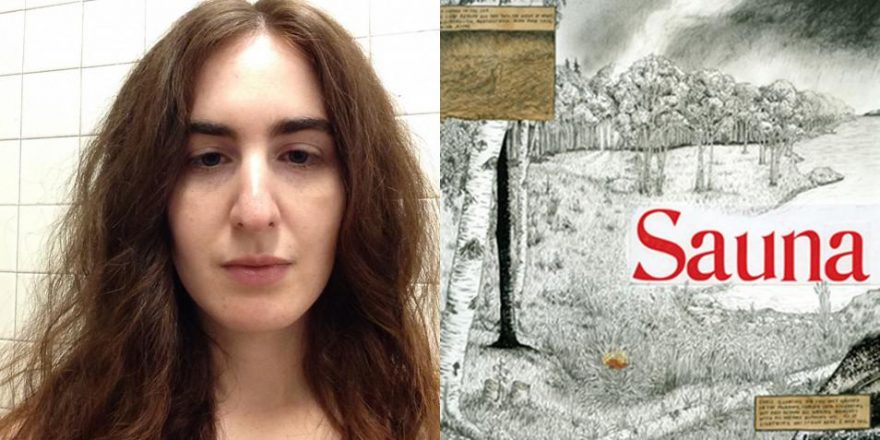The first Mount Eerie song I ever heard was the opening track from the 2017 album A Crow Looked at Me. Its first words are, “Death is real, someone’s there and then they’re not, and it’s not for singing about, it’s not for making into art.” (Elverum’s wife, Geneviève Castrée, died in 2016.) I was plunged into a story so deeply personal that it felt vulgar for me to be hearing it, but so intimate and honest that I was unable to turn it off.
This introductory line is a chilling indictment of both the listener and the artist that dismantles the casual listening experience. The song informs us that death and loss are not the stuff of art, and yet this sentiment is being conveyed to us in music so raw that we hardly know how to interact with it. When the topic of loss is stripped of the poetic embellishment that makes it tolerable, what is left gives us no place to hide. We’re confronted both with an excruciatingly vivid portrayal of death, and with the morbid prospect that we are willingly engaging with and appreciating it as art. As beautiful as that art may be, it feels almost indecent to praise it, at the risk of commodifying or neglecting the very real tragic circumstances that caused it to be made.
Certainly death is not a new subject for musicians, but songwriter Phil Elverum’s refusal to use euphemism is uniquely moving. The choice not to avoid the finality and pain of death, but to acknowledge it openly is what constitutes the bravery and candor of Mount Eerie’s work. Elverum uses a pragmatic lexicon around pain not to erase emotion but to better know it, to command an agency over grief by deciding how memory will be used.
In an inscription from the artist below the track list of A Crow Looked at Me, Elverum explains: “These cold mechanics of sickness and loss are real and inescapable, and can bring an alienating, detached sharpness. But it is not the thing I want to remember. A crow did look at me. There is an echo of Geneviève that still rings, a reminder of the love and infinity beneath all of this obliteration. That’s why.”
That echo is present throughout Mount Eerie’s newest album, Now Only, as the narrator continues to document his journey moving through loss. The record excavates the past, yielding tools that help the protagonist in their tenuous navigation of the future. It is the story of a person who is negotiating how to carry the past into the present; how to exist now.
Sonically, the songs oscillate freely between moods, mimicking the non-linear, arduous process of grieving. Shifts in musical or lyrical tone are often unsmooth: The songs pivot from slow, delicate drone to grating distortion, only to slide back into the lull of a softly plucked guitar. Changes are abrupt to the point of feeling unplanned, giving Now Only lifelike unpredictability. The fluid structure is a perfect vessel for Elverum’s lyrics, which sound more like sung diary entries than songs.
“Now Only,” the record’s title track, begins in a subdued crawl, but transitions to a bouncing major-key refrain to deliver a grim realization: “People get cancer and die. People get hit by trucks and die. People just living their lives get erased for no reason with the rest of us watching from the side.” The stark contrast of the music mirrors the contrast in thought—the speaker knows death is inescapable and commonplace, but cannot help feeling his devastation is unique. With acute self-awareness, Elverum identifies those conflicting ideas and examines them. The song recognizes these apparent contradictions, but doesn’t punish them. Instead, it rests in the liminal space between two empirical conclusions, seeking a way to gently reconcile emotion with reality.
Mount Eerie’s nuanced songwriting is highlighted in the storytelling of Now Only. The record is full of sketches of life that are image-rich and emotionally dense, often both painful and hopeful. Some scenes are darkly comical, such as the macabre humor of finding the artist leaning on Skrillex’s tour bus after being “flown out to a festival to play death songs for teenagers on drugs.” The narrator jests at how ridiculous this is, but seriously grapples with the absurdity of living in the wake of death, and introduces a new awareness to the listener of how it feels to share private emotions in an extremely public setting. While the speaker allows an audience, he maintains that the purpose of the songs is to affirm the truth of his experience. They are tools for coping.
“Tintin in Tibet,” the first song on the album, begins, “I recorded all these songs about the echoes in our house now, then walked out the door to play them on a stage, but I sing to you.” By naming its elements specifically, he gives his loss dimensions. Here, echoes indicate hollowness, the properties of sound in a vacant space that gives shape to absence, but they are also, as on A Crow Looked at Me, animated representations of the past. They are reverberations of something that has ended but persists and is never lost entirely.
In “Distortion,” the speaker admits, “I don’t believe in ghosts or anything, I know you’re gone and I’m carrying some version of you around.” Knowing no one is there, he sings anyway. Despite not believing in ghosts, he sees them “created every moment by my dreaming you so.” There is something noble in this attempt to imbue a cold, factual world with some belief in the intangible. Superstition and rationality coexist in this song, showing us the idea that spirit remains after bodily death is not a mystical cliché: We keep things alive within ourselves.
Later, Elverum describes himself doing the same thing as a child incapable of comprehending death: trying to “wriggle out of my own mortality,” and wishing to “echo beyond my actual end.” It is something so human: to accept painful reality, and to wish to refute it.
For all its harsh realism, Now Only leaves room for idealism. Paradoxes remain unresolved, and joy and pain, or belief and unbelief, are allowed to take up the same space. The record embraces uncertainty and implies it’s possible to move forward even in the midst of hurt and confusion. It does not offer solutions. It tells us a story about grieving.
Healing comes slowly and in parts, but is inevitable—in “Earth,” Elverum describes feeling solace even against his own will, and we see that the release of hurt happens sometimes without our consent. Sorrow comes in waves that hit less and less frequently as the echoes of pain gradually dissipate.
A simple but profound revelation comes to the speaker in “Two Paintings by Nicolai Astrup,” when he is told plainly to “live your life,” assured that the ground is ready to open back up again should he idle in despair too long. Death’s imminence is both haunting and hopeful; its nearness emphasizes the preciousness of living. The speaker knows he can neither undo the past nor prevent the future, and while there is some powerlessness in that, there is also comfort.
Now Only invites us into the vulnerable, private pain of another, and allows us to see ourselves within it. By listening, we become reverent witnesses to another’s suffering and testify to the truth of their experience, and that is possibly the purest thing we can expect from art—to know others better and to be better known, to make peace with our actuality. Maybe this is the resolution that Elverum is trying to communicate: the peace of the present, which is expressed with what sounds like relief on the record as he says aloud, under the desert stars, “Now only.”


